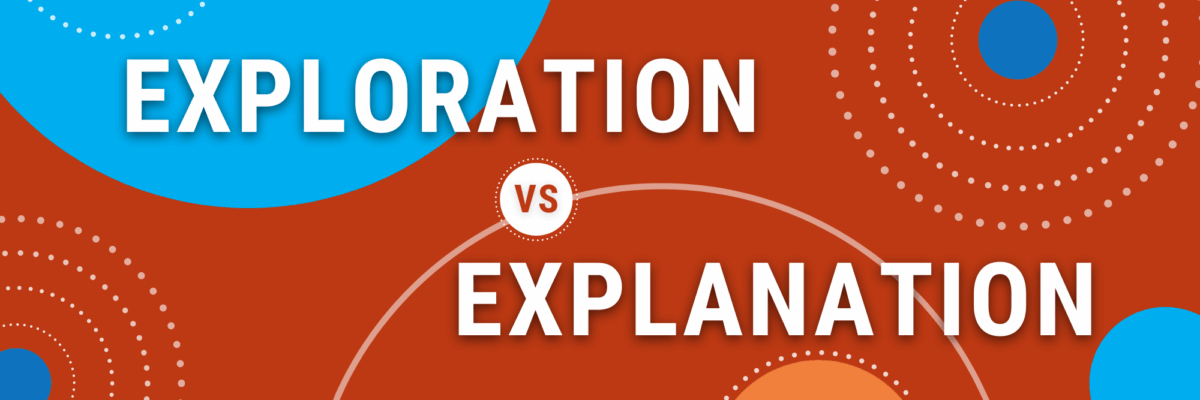Exploration vs Explanation
The data visualization process can be divided into two general phases: Exploration and Explanation.
Exploration is when you’re cleaning your data, analyzing it, maybe throwing it into a few different graph types with practically no formatting in order to just see the patterns and outliers.
Exploration is like when you’re in the kitchen, cutting your fruits and vegetables, mixing the wine with the cheese (we’re making fondue), adding herbs and tasting, tasting, tasting.
Exploration is like when you’re in your sweatpants at the gym (gotta work off that fondue), lifting weights, stretching out, getting that sweat.
Exploration is when you search for the insights in your data. What’s surprising? What’s interesting? What actually answers my audience’s questions?
Exploration is not what you show other people, unless you’re on a team of explorers.
In the exploration phase, it’s super helpful to know about the vast array of chart types that are out there. And even to know how to produce those chart types quickly. You just need to slap your data into a few different options to see the patterns and catch the insights.
Your charts, in exploration, will likely look terrible (like me at the gym or my kitchen when I’m making dinner) and only be decipherable to you.
The explanation phase is totally different.
Explanation is where you tell the story you saw during exploration to other people who are not explorers.
Explanation is when you saunter into the dining room with your fondue and your guests dig in.
At some point during dinner, someone might ask you for your recipe. But for the most part, your audience is interested in hot cheese and the rich conversation you facilitate with your hosting skills.
Explanation is your sleeveless shirt showing off your triceps. (And I’m not including a gif here because you’re probably at work and people are already questioning why you’re looking at fondue.)
You wouldn’t walk up to the hottie scoping out your arm definition and launch into a description of your keto diet and weight circuit (please I beg you, do not).
But we so often mix up exploration and explanation that we do something akin to that in our meetings. We describe our exploration when the audience is mostly interested in your explanation. You feel me?
When it comes time to teach other people the things you learned during your exploration, your charts should look clean and clear. Your words may have to be translated into a message your audience understands.
Exploration charts look like this:

Explanation charts look like this:
Exploration and explanation take different skill sets.
It’s not easy to find someone who can do both, equally effectively. So if it’s feeling like you’re being asked to do data stuff that’s beyond your comfort level or skill set – it’s probably because you’re a specialist in one phase and not the other.
Now you know, and you can advocate for yourself to get another team member or enroll in some professional development that can round you out.
At Evergreen Data we only focus on explanation.
You, too, can be a specialist in just one area, if you want. Data viz is so big and encompassing, you don’t necessarily have to explore AND explain if you’re feeling super strong in just one area.
If you’re trying to brush up on your explanation, use the Data Visualization Checklist. It’ll help you take your basic exploration charts and turn them into explanatory stories.



